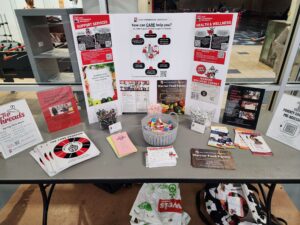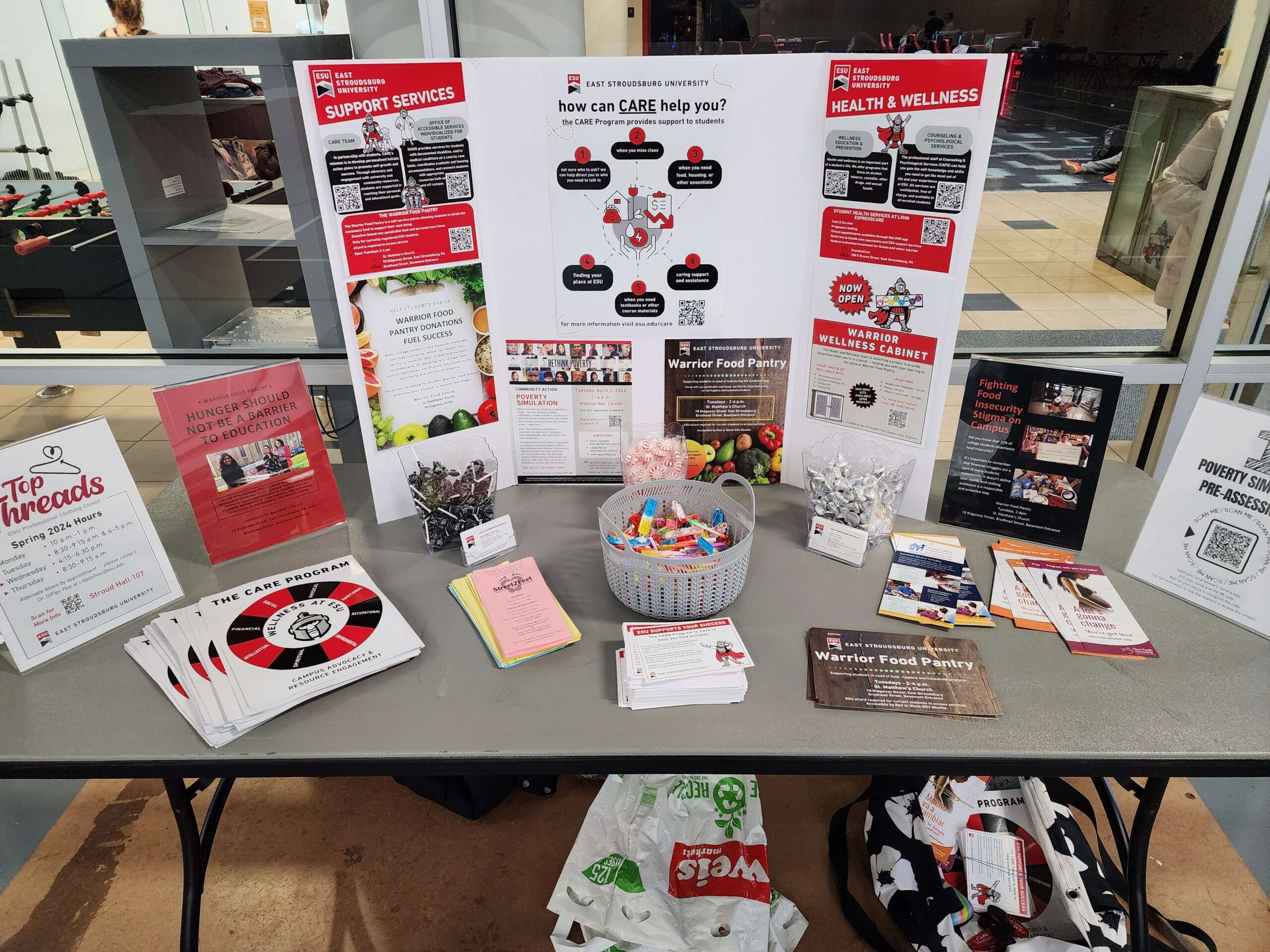
Gabriel Gonzalez
Student Life Editor
The Northeast Pennsylvania Area Health Education Center (AHEC) recently hosted a poverty simulation on April 2 from 2-4 p.m. to highlight the difficulties low-income households face and how awareness of such issues would be beneficial for everyone, particularly the health industry.
Though it had a focus on those within the health industry, students and practitioners alike, the simulation was open to all students, and it took place in the Mattioli Recreation Center.
“I think I’ll have a better understanding of what life for students below the poverty line go through,” said Emily Schaff, senior year nursing major of Smithtown, N.J. before participating.
Since it was the first poverty simulation the AHEC hosted at ESU–which had been awarded the Pa Hunger-Free Campus Grant in 2024–many students were unsure of what exactly the simulation entailed. But within minutes, it was cleared up. An event organizer laid out what the poverty simulation was, clearing up rules and mstking points of interest in the preamble.
The simulation was modeled by the Missouri Communications Action Network, using real-world situations and dynamics to develop it. Professionals all over the country are trained in it, including the staff of the AHEC who ran the simulation.
After registering, participants were given the IDs of fictional people belonging to a fictional family, and from there the participants grouped up to strategize and work through four fifteen-minute “weeks” where the prices of a mortgage, food, healthcare, transportation and emergency expenses dealt by the hand of fate, which was a literal aspect of the simulation.
It wasn’t just that. Social Services would go around the room to collect the neglected “children” participants, and a volunteer thief who seemed very happy in his position would stop by empty “homes” to steal their valuables, usually to disastrous effects.
At the end of the ordeal, most of the participants reported failing to feed their families, pay their mortgages or properly attend to their children. But what most didn’t know about were the stations set up to aid them at their lowest point, which was intentionally done to highlight the need for highlighting resources for those in poverty.
Jennie Smith, dean of student life, had planned for students suffering through similar situations to attend, but due to the nature of the issue, she came with anonymous accounts instead: “I’m not thriving right now. What am I going to do? Where am I going to go? My goal was to come for a degree, but now I just want to come home to food in my fridge.”
The room was quiet for a moment. Just before that statement, many participants admitted to feeling confused and angry at the situation low-income families found themselves in.
Leslie Petroff of the AHEC confirmed that it was the common response: “I think everyone walks away with more understanding and empathy.”
Cosponsored by the CARE program, the AHEC offered information at their resource table, inviting those struggling with poverty and those who know of those struggling with poverty to share the many pamphlets on on-campus support.

“Even though it has the feel of a game, this is reality,” Petroff said. “These are some of the challenges and barriers that students face.”

